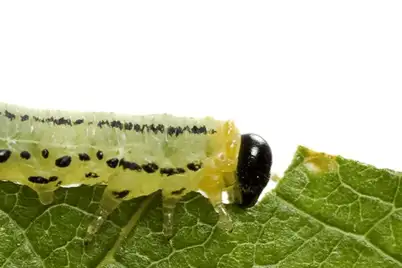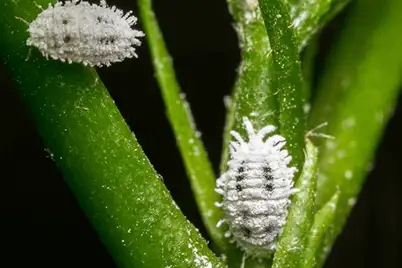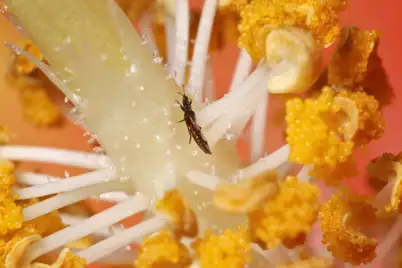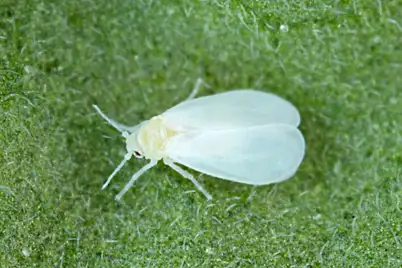Australian Funnel-web Spiders are usually black in colour, and very shiny on the thorax and legs. Their body length varies from about 15 mm to 50 mm depending on the species, with the female being the larger of the genders. For example, the female Sydney Funnel-web Spider has a body length of about 35 mm while the male has a body length of about 25 mm.
Funnel-web burrows usually occur in moist, cool, sheltered areas. You won't find them in the middle of a sunlit lawn. The most characteristic sign of a Funnel-web Spider's burrow is the easily visible silk trip-lines that radiate out from the burrow entrance of most species – including the tree dwelling ones. The trip-lines are used by the concealed spider to detect passing prey.
The Northern Tree Funnel-web Spider lives, as the name suggest, in trees. Burrows of this spider have been recorded high up in trees about 30 meters above the ground. They and other species of Tree Funnel-webs make silk-lined retreats in holes and rot-crevices in a variety of trees. They usually disguise the burrow entrance with bark or wood particles. Visible trip-lines are usually seen radiating out across the bark of the tree. There also may be more than one entrance.
Trapdoor Spiders, which may be confused with Funnel-web Spiders, are usually dark brown in colour. Some Trapdoor Spiders have lids on their burrows while others have an open burrow. Lid or no lid, the trip-lines of Trapdoor Spider burrows are much less obvious than those of Funnel-web Spiders.
Mouse Spiders are usually brown-black in colour and more compact in shape than Funnel-webs. They dig burrows in the ground but once again don't have obvious radiating trip-lines like Funnel-webs. Recently, researchers demonstrated that Mouse Spider venom is similar to Funnel-web spider venom. In rare cases where the reaction was severe, Mouse Spider bites have been treated successfully with Funnel-web Spider antivenom.





